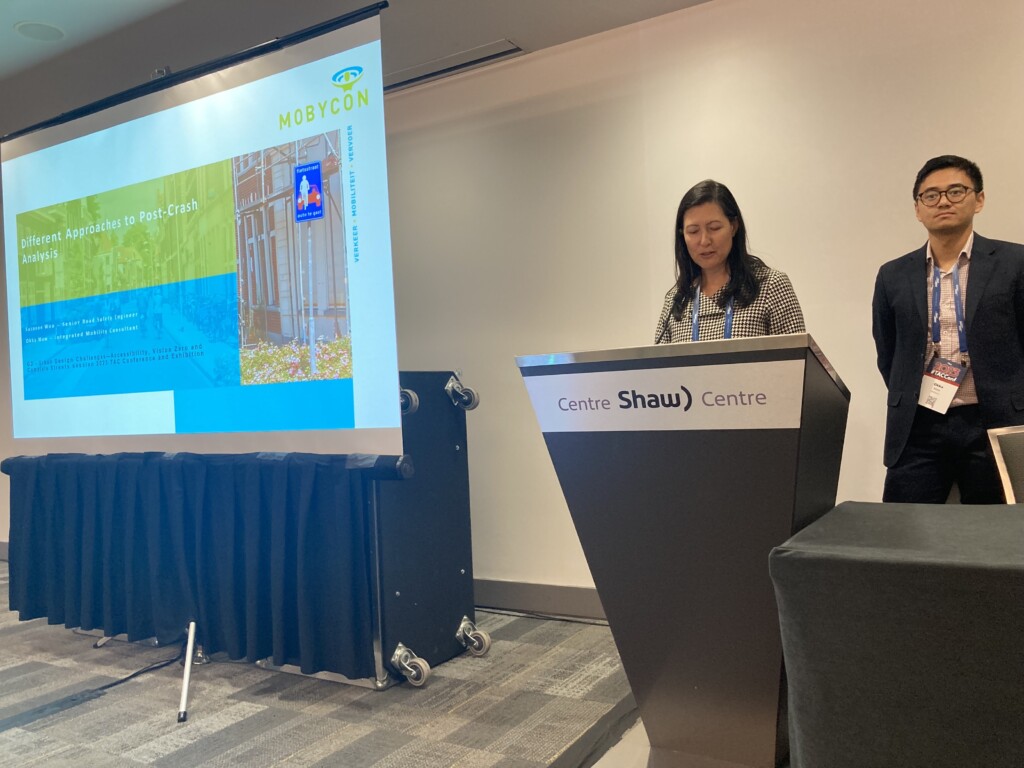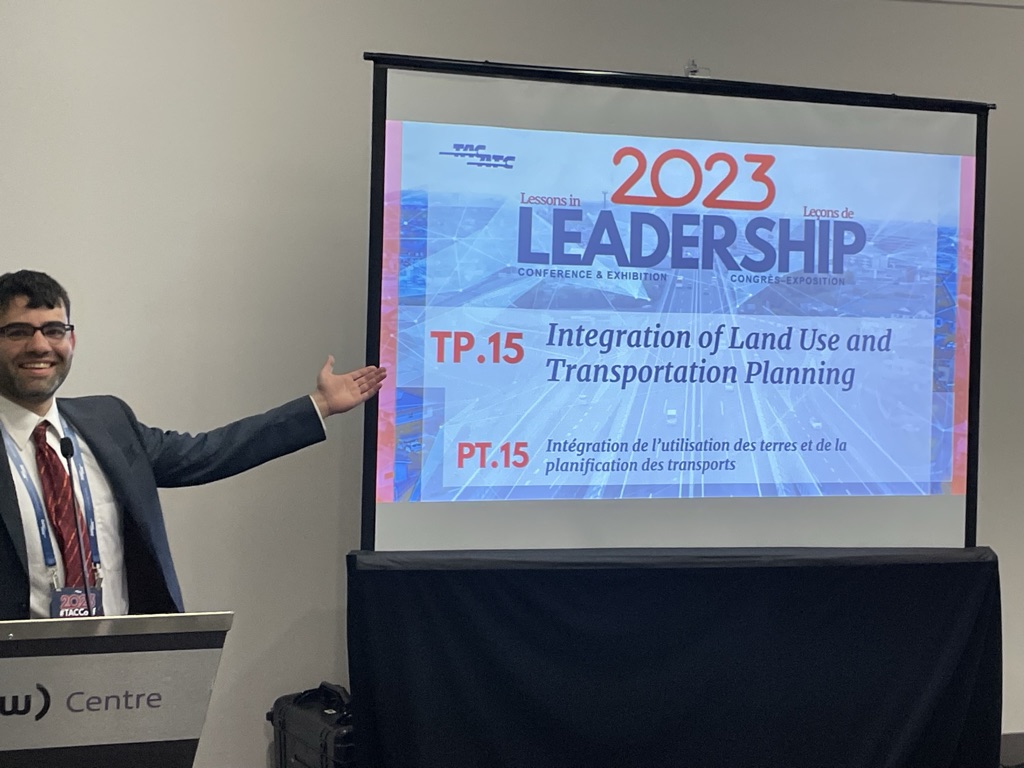Accessibility / Conference
TAC Conference Recap
From the 25th to the 27th of September, Integrated Mobility Consultant Narayan Donaldson attended the Transportation Association of Canada conference, which took place in Ottawa, Ontario, just across the Rideau canal from Mobycon’s Canadian office. This is the largest transportation conference in Canada, and this year there were over a thousand attendees. He had the privilege of presenting on the integration of transportation and land use planning using the Dutch principles of Sustainable Safety, and he also sat on two panels – on social media as a planning tool, and on e-bikes. Okka Maw and Suzanne Wu also gave a presentation at the conference on post-crash analysis.
Narayan shares his reflections on just a couple of the most interesting sessions he attended here.

In addition sharing our knowledge and experiences with other practitioners, I had the chance to learn from many others on a variety of topics. Here are couple of my favourite presentations, which were a pair of presentations on the details of cycling infrastructure design as it pertains to accessibility for people with visual impairments. This has been a hot topic in active transportation infrastructure design in Canada, which escalated to a case at the British Columbia human rights tribunal regarding the design of pedestrian crossings across bicycle paths.

Half-height curbs along cycle paths
In the presentation on half-height curbs, Will Rose of Morrison Hershfield shared the evolution of dividers between cycle paths and adjoining sidewalks as part of the City of Ottawa’s standard designs. The first generation of divider was a single row of tactile guiding tiles, but each new iteration of the design needed to be wider than the last, as each design was eventually found to be insufficiently detectable for people navigating using guide dogs or white canes. In contrast, a half-height vertical curb is easily detectable by both dogs and cane, while taking up less road space than the wide tactile strips which would otherwise be required. However, implementing vertical curbs requires careful thought regarding water drainage and snow clearance.
In the Netherlands, half-height curbs are common along bicycle paths and are increasingly using 45-degree angled faces to reduce the risk of cyclists falling down if they strike the curb, while also making it easier to cross the bicycle path using mobility devices. But Will noted that Ottawa’s new standard for half-height curbs uses vertical curb faces since snow plows can then use them as a guide.

Accessibility features of bus stops adjacent to cycle paths
Lui Greco of the Canadian National Institute of the Blind and Yousteena Bocktor of WSP presented their research on the design of island bus stops separated from the sidewalk by a bicycle path, which involved bringing participants with visual impairments to a variety of bus stops across Ontario. They found that many of the bus stops were difficult to locate, with issues ranging from a lack of tactile guidance from the back of the sidewalk to the bus stop, to a lack of tactile guidance from crosswalks to the bus stop. The expected behaviour for waiting passengers at the bus stop was also hard to decipher in some cases. At some stops, the platform is narrow and passengers need to wait on or behind the sidewalk, while at others, passengers are expected to wait on the platform. If a passenger were to wait behind the sidewalk at a stop where passengers would be expected on the platform, there is a chance that they would be missed by the bus operator. Some design tools which help to clarify situations where passengers should wait on the platform include providing a linear barrier along the back of the platform, adjacent to the bicycle path, and locating street furniture such as the shelter and benches on the platform rather than on the sidewalk.
I also attended many other very informative presentations, including a panel on introducing geometric designs to reduce vehicle speeds, and a presentation on the logistics of converting a disused railway into a walking and cycling trail. The three days of presentations by transportation professionals from across the country left me inspired for my work going forward, and I was grateful for the opportunity to be part of the knowledge exchange.
 ">
">Narayan Donaldson
“So many of the world’s challenges, from climate change, to public health, to wealth inequality, have the potential to be alleviated through changes to transportation systems. That is what underlies my passion for implementing sustainable, safe and equitable transportation solutions.”

